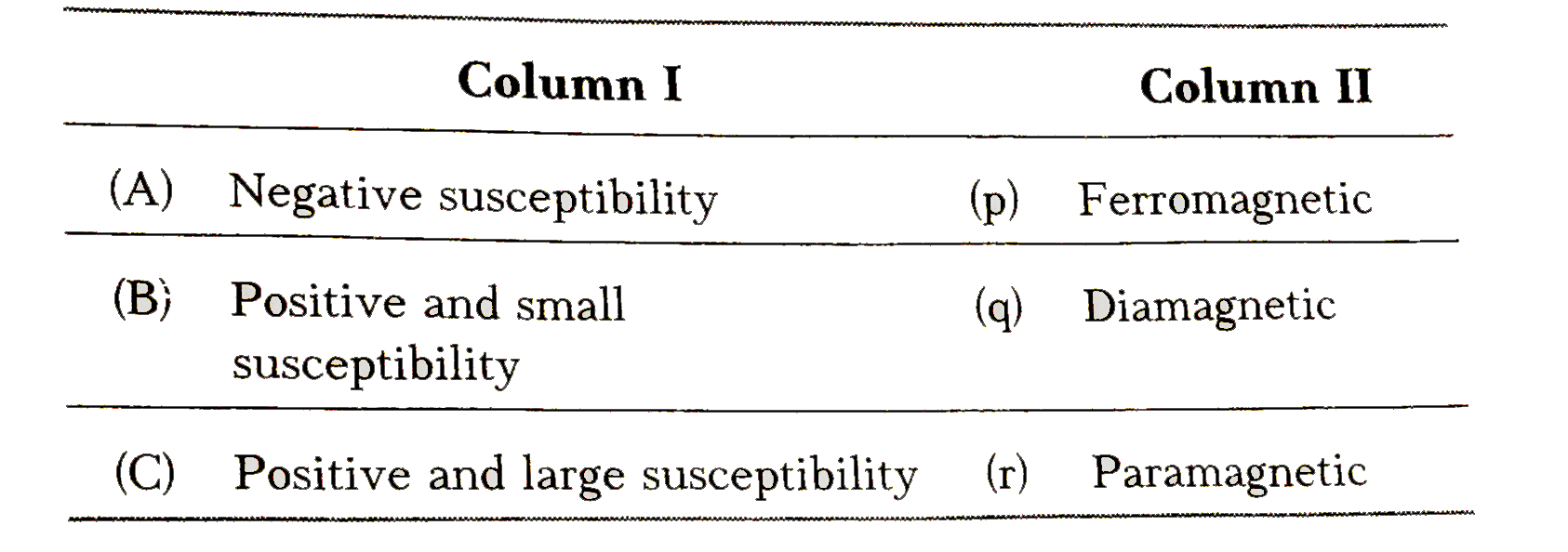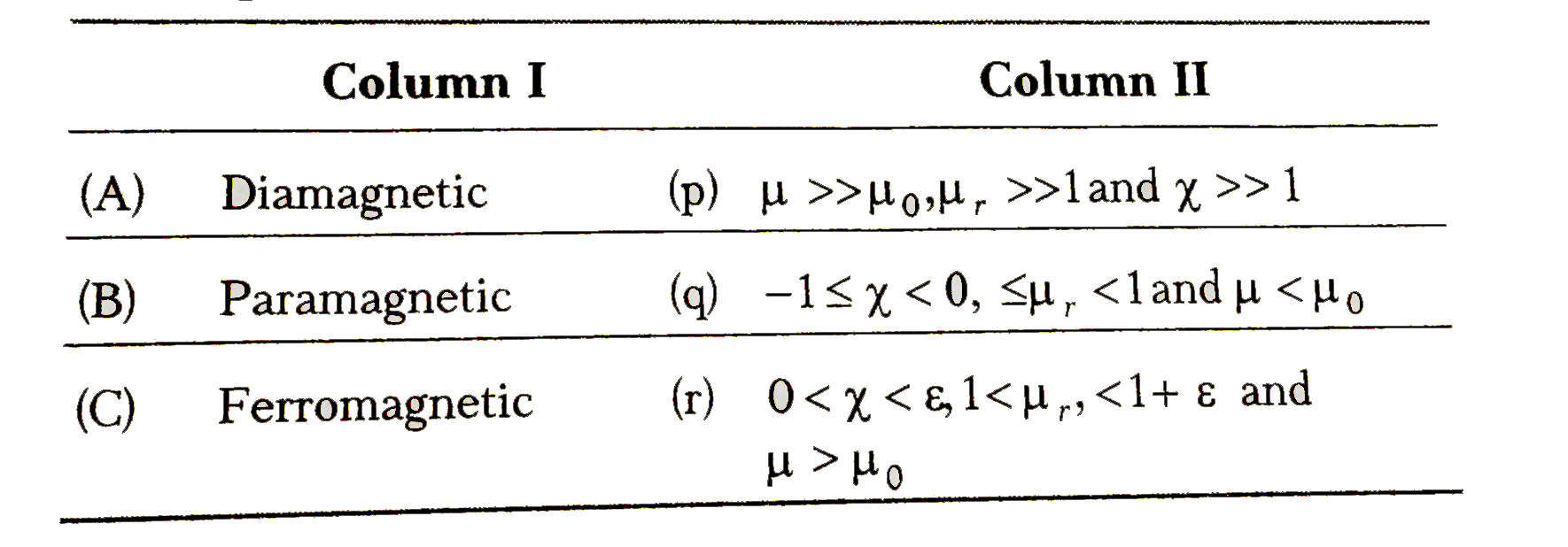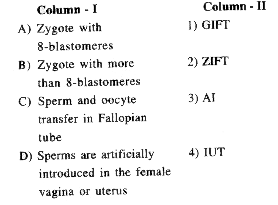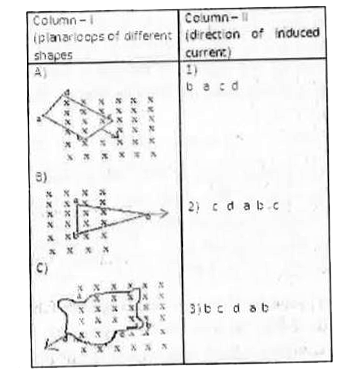Match the following and choose the correct option from those given below.
ColumnAColumnBA.Molecular oxygeni.α−Ketoglutaric acidB.Electron acceptorii.Hydrogen acceptorC.Pyruvate dehydrogenaseiii.CytochromeCD.Decarboxylationiv.AcetylCoA
A-ii,B-iii,C-iv,D-i
A-iii,B-iv,C-ii,D-i
A-ii,B-I,C-iii,D-iv
A-iv,B-iii,C-I,D-ii
The correct Answer is:a
To solve the matching question, we will analyze each item in Column A and find its corresponding match in Column B step by step.
1. Molecular Oxygen:
- Molecular oxygen (O₂) is known to act as an electron acceptor in cellular respiration. It combines with electrons and protons to form water.
- Match: Molecular oxygen → Hydrogen acceptor (ii).
2. Electron Acceptor:
- In the context of cellular respiration, cytochrome c is a well-known electron acceptor that plays a crucial role in the electron transport chain.
- Match: Electron acceptor → Cytochrome c (iii).
3. Pyruvate Dehydrogenase:
- Pyruvate dehydrogenase is an enzyme that catalyzes the conversion of pyruvate into acetyl coenzyme A during the link reaction of cellular respiration.
- Match: Pyruvate dehydrogenase → Acetyl CoA (iv).
4. Decarboxylation:
- Decarboxylation is a chemical reaction that involves the removal of a carboxyl group, and it occurs in the Krebs cycle, specifically with alpha-ketoglutaric acid.
- Match: Decarboxylation → Alpha-ketoglutaric acid (i).
Final Matches
- A: Molecular oxygen → ii: Hydrogen acceptor
- B: Electron acceptor → iii: Cytochrome c
- C: Pyruvate dehydrogenase → iv: Acetyl CoA
- D: Decarboxylation → i: Alpha-ketoglutaric acid
Correct Option
Based on the matches, the correct option is:
- A → ii
- B → iii
- C → iv
- D → i
- Molecular oxygen (O₂) is known to act as an electron acceptor in cellular respiration. It combines with electrons and protons to form water.
- Match: Molecular oxygen → Hydrogen acceptor (ii).
- In the context of cellular respiration, cytochrome c is a well-known electron acceptor that plays a crucial role in the electron transport chain.
- Match: Electron acceptor → Cytochrome c (iii).
- Pyruvate dehydrogenase is an enzyme that catalyzes the conversion of pyruvate into acetyl coenzyme A during the link reaction of cellular respiration.
- Match: Pyruvate dehydrogenase → Acetyl CoA (iv).
- Decarboxylation is a chemical reaction that involves the removal of a carboxyl group, and it occurs in the Krebs cycle, specifically with alpha-ketoglutaric acid.
- Match: Decarboxylation → Alpha-ketoglutaric acid (i).
- A: Molecular oxygen → ii: Hydrogen acceptor
- B: Electron acceptor → iii: Cytochrome c
- C: Pyruvate dehydrogenase → iv: Acetyl CoA
- D: Decarboxylation → i: Alpha-ketoglutaric acid
Based on the matches, the correct option is:
- A → ii
- B → iii
- C → iv
- D → i
Topper's Solved these Questions
- BOOK - NCERT FINGERTPS ENGLISHCHAPTER - RESPIRATION IN PLANTSEXERCISE - Assertion & Reason15videos
RESPIRATION IN PLANTS
- BOOK - NCERT FINGERTPS ENGLISHCHAPTER - RESPIRATION IN PLANTSEXERCISE - Respiration In Plants130videos
RESPIRATION IN PLANTS
- BOOK - NCERT FINGERTPS ENGLISHCHAPTER - RESPIRATION IN PLANTSEXERCISE - HOTS7videos
RESPIRATION IN PLANTS
- BOOK - NCERT FINGERTPS ENGLISHCHAPTER - PLANT KINGDOMEXERCISE - Plant Kingdom160videos
PLANT KINGDOM
- BOOK - NCERT FINGERTPS ENGLISHCHAPTER - STRUCTURAL ORGANISATION IN ANIMALSEXERCISE - Structural Organisation In Animals129videos
STRUCTURAL ORGANISATION IN ANIMALS
Similar Questions
Knowledge Check
- Question 1 - Select One
Match column I with column II and select the correct option from the codes given below.
Column IColumn IIA. Cleavage(i). FertilisationB. Morula(ii). Mitotic divisionsC. Polyspermy(iii). EndometrialD. Implantation(iv). Little mulberryAA-(ii),B-(iv),C-(i),D-(iii)BA-(i),B-(iv),C-(ii),D-(iii)CA-(iv),B-(ii),C-(i),D-(iii)DA-(ii),B-(iv),C-(iii),D-(i) - Question 2 - Select One
Match column I with column II and select the correct option from the codes given below.
Column IColumn IIA.Acrosome(i)Rudimentary erectile tissueB.Endometrium(ii)UterusC.Polar body(iii)OogenesisD.Clitoris(iv)SpermatozoonAA−(ii),B−(i),C−(iv),D−(iii)BA−(iv),B−(ii),C−(iii),D−(i)CA−(iv),B−(iii),C−(ii),D−(i)DA-(iv), B-(iii), C-(i), D-(ii)
Match the terms of Column I with the tems of Column II and choose the correct option from the codes given below.
 View Solution
View SolutionMatch the following and choose the correct combination from the option given
Column IColumn IIa.Sulphuri.Chlorophyllb.zincii.Nitrogenasec.Magnesiumiii.Methionined.Molybdenumiv.AuxinView SolutionMatch the terms of Column I with the items of Column II and choose the correct option from the codes given below.
 View Solution
View SolutionMatch column I with column II and select the correct option from the codes given below.
Column IColumn IIA.Green revolution(i)Milk productionB.Pisciculture(ii)Crop plantsC.White revolution(iii)Fish productionD.Blue revolution(iv)Rearing of fishesView SolutionMatch the columns nad choose the correct option
Column IColumn IIA.Magnesiumi.Alcohol dehydrogenaseB.Molybdenumii.phosphoenol pyruvateC.Zinciii.NitrogenaseView SolutionMatch the columns I and II, and choose the correct combination from the options given.
Column IColumn IIi.Coconuta.Monoeciousii.Papayab.Dioeciousiii.Tapewormiv.EarthwormView Solution



